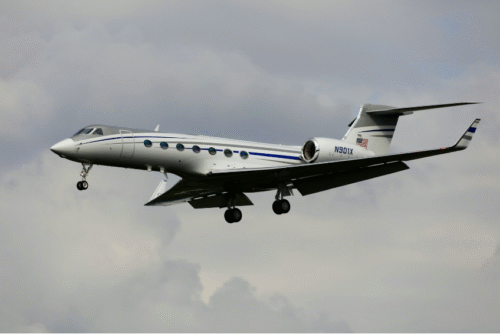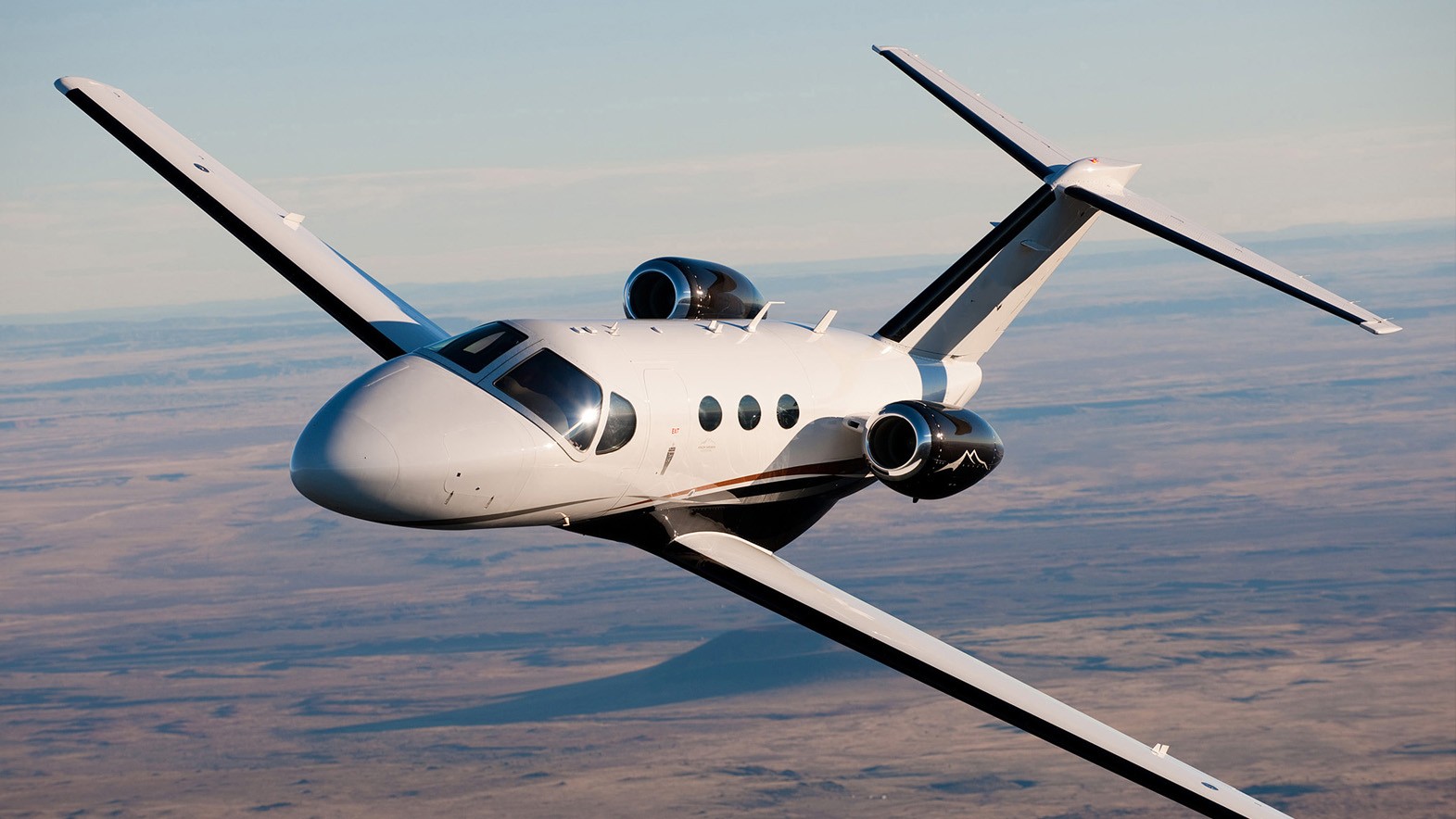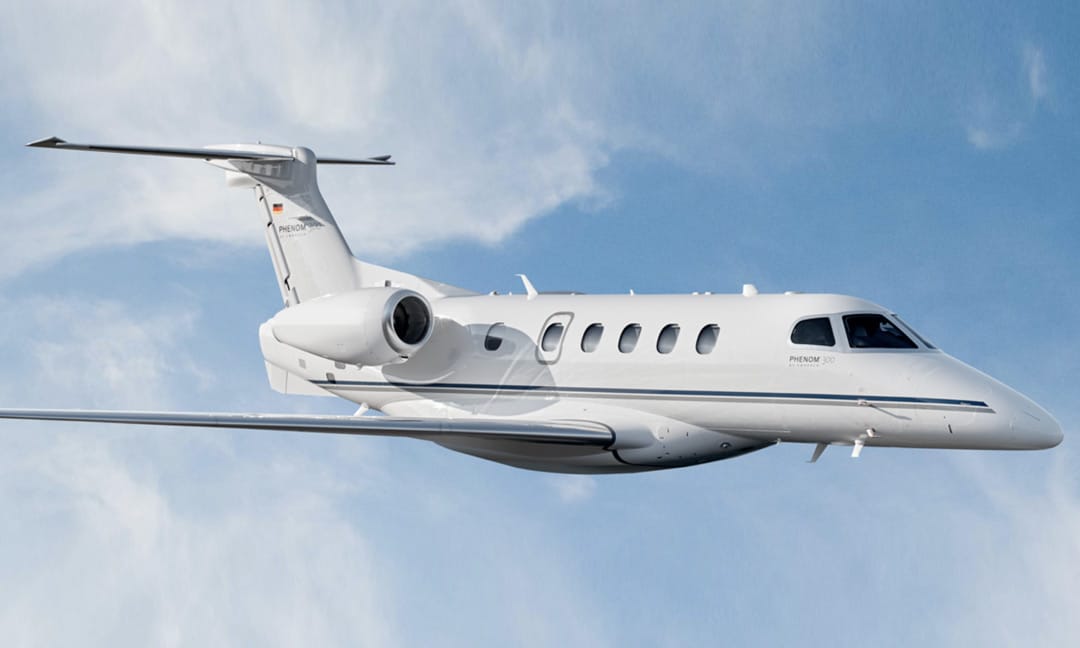Gulfstream G550 Review: The Ultimate Long-Range Business Jet
8 min read

Seeing your first Gulfstream G550 touchdown, you'll quickly understand why it's earned legendary status in business aviation.
There's something unmistakable about the sleek profile, sweeping wings, and the distinctive oval windows that have fundamentally become Gulfstream's signature.
Since 2003, when the first production model flew, the G550 has been quietly revolutionizing executive travel, shrinking the globe for those who demand the ultimate combination of range, speed, and luxury.
Although no longer in production, the G550 remains a staple in executive business travel and is well worth considering when investing.
Here's what you need to know in order to make the right decision for you.
From GV to G550: An Aviation Evolution
Let's start at the beginning.
The G550's story begins with Gulfstream's groundbreaking GV, which made history as the first ultra-long-range business jet to hit the market.
Initially called the GV-SP (Special Performance), the G550 built upon this foundation with significant improvements in avionics, range capabilities, and passenger comfort.
What's truly remarkable is how the G550 captured the market's imagination.
During its production run from 2003 to 2021, Gulfstream delivered over 600 of these magnificent machines worldwide, making it the company's best-selling model at the time.
Not just impressive but a testament to the aircraft's reliability, performance, and the deep satisfaction of its demanding clientele.

Performance That Redefines Possible
The G550's calling card is in its staggering range.
At Mach 0.80, this aircraft will carry you 6,750 nautical miles without stopping for fuel.
Take a moment - that's New York to Tokyo, London to Singapore, or Washington D.C. to Dubai in a single bound.
For business travelers, this isn't just convenience; it's a competitive advantage measured in hours saved and deals closed.
Speed is equally impressive.
Push the throttles forward and the G550 will cruise at 488 knots (about 561 mph), while its long-range cruise speed holds steady at 459 knots. When you need to really move, this jet can reach up to 580 knots in high-speed cruise—leaving most airliners eating its contrails.
The G550 climbs effortlessly to 51,000 feet, well above commercial traffic and weather, where the air is smooth and fuel efficiency peaks.
Up there, looking down at the cloud tops from the comfort of your leather seat, you gain a new perspective on travel—perhaps business too.
And then there's the flexibility that comes with its runway performance.
Despite housing intercontinental capabilities, the plane needs just 5,910 feet for takeoff and a mere 2,770 feet for landing.
This means you're not limited to major international airports—you can touch down at smaller regional fields closer to your actual destination, saving hours of travel and associated cost, without sacrificing experience.
Here's a comprehensive list of key statistics for the Gulfstream G550 business jet:
Performance
- Maximum Range: 6,750 nautical miles (12,501 km)
- Maximum Speed: Mach 0.885 (511 knots/585 mph/941 km/h)
- Long-Range Cruise Speed: Mach 0.80 (459 knots/528 mph/850 km/h)
- Takeoff Distance (SL, ISA, MTOW): 5,910 ft (1,801 m)
- Landing Distance (SL, ISA, MLW): 2,770 ft (844 m)
- Maximum Operating Altitude: 51,000 ft (15,545 m)
- Initial Cruise Altitude: 41,000 ft (12,497 m)
Dimensions
- Length: 96 ft 5 in (29.4 m)
- Wingspan: 93 ft 6 in (28.5 m)
- Height: 25 ft 10 in (7.9 m)
- Cabin Length (excluding baggage): 43 ft 11 in (13.39 m)
- Cabin Width: 7 ft 4 in (2.24 m)
- Cabin Height: 6 ft 2 in (1.88 m)
- Cabin Volume: 1,669 cu ft (47.3 cu m)
- Baggage Compartment: 170 cu ft (4.8 cu m)
Weights Maximum Takeoff Weight (MTOW): 91,000 lb (41,277 kg) Maximum Landing Weight (MLW): 75,300 lb (34,156 kg) Basic Operating Weight: 48,300 lb (21,909 kg) Maximum Payload: 6,200 lb (2,812 kg) Maximum Fuel Weight: 41,300 lb (18,733 kg)
Power & Systems Engines: Two Rolls-Royce BR710 C4-11 turbofans Thrust: 15,385 lb (68.4 kN) each Avionics: Gulfstream PlaneView cockpit (based on Honeywell Primus Epic) APU: Honeywell GTCP 36-150
Capacity Standard Seating: 14-19 passengers Maximum Passengers: Up to 19 Typical Crew: 2 pilots, 1-2 flight attendants (Just like the Gulfstream G700) Lavatory Capacity: Forward and aft lavatories
Production & Cost Year Introduced: 2003 Production End: 2021 Approximate New Cost (final years): $45-55 million USD Typical Pre-owned Cost (varies by year/condition): $14-38 million USD
Environmental Fuel Capacity: 6,220 gallons (23,543 liters) Fuel Consumption (average): Approximately 358 gallons/hour (1,355 liters/hour) This aircraft is known for its exceptional range, reliability, and cabin comfort in the large-cabin business jet category.
Step Inside: Where Luxury Meets Functionality
Walking through the G550's cabin, you immediately understand why this aircraft commands such respect.
At nearly 44 feet long (excluding the baggage area), 7 feet 4 inches wide, and 6 feet 2 inches high, the interior volume of 1,669 cubic feet gives you room to work, relax, dine, and sleep in exceptional comfort.
The G550 can be configured with up to four distinct living areas and offers 12 different floor plans to match your mission profile.
While it can technically seat up to 19 passengers, the more common executive layouts accommodate 8-14 travelers, with the spaciousness befitting a flagship jet.
For those marathon transoceanic flights, sleeping accommodations for up to 8 passengers ensure you arrive rested and ready.
What's more, you can appreciate Gulfstream's flexibility in placing the galley either forward or aft, allowing operators to customize based on their preferences and typical mission profiles.
And all this backed by the cabin's 100% fresh air pressurization system, which combines with Gulfstream's signature oval windows to create an environment that feels more spacious and reduces fatigue during those 12+ hour flights.
The PlaneView Revolution
And from a pilot's perspective?
The G550 houses Gulfstream's revolutionary PlaneView flight deck—an exclusive version of Honeywell's Primus Epic avionics system.
Four 14-inch flat-panel displays dominate the instrument panel, presenting critical information with clarity and customization options that pilots love.
The cursor control devices mounted at each pilot position feel intuitive and enable precise management of the advanced systems.
Combine this with the integrated Head-Up Display (HUD) and Enhanced Vision System (EVS II), and pilots can literally see through darkness, fog, and other visual obscurations. It's not just impressive technology—it's a genuine safety enhancement that allows operations in conditions that would ground other aircraft.
Triple inertial navigation systems provide the redundancy that inspires confidence on over-ocean flights, while the I-NAV interactive navigation system makes flight planning more intuitive.
The standard autothrottles reduce pilot workload during critical phases of flight, another example of how the G550 combines cutting-edge technology with practical operational benefits.
Connected at 51,000 Feet
Today's business environment demands connectivity, and the G550 delivers.
High-speed Jet ConneX keeps you online at 51,000 feet, while satellite phone systems ensure you're never out of touch. Advanced entertainment systems make downtime productive or pleasurable, depending on your needs.
With printing and fax facilities available, your G550 can truly function as an office in the sky.
The cabin's advanced sound suppression creates a surprisingly quiet environment, allowing for normal conversation or uninterrupted sleep. It's this attention to both technological needs and human comfort that elevates the G550 experience.
The Business of Flying: Operating a G550

Operating an aircraft of this caliber requires professional crew and a significant budget.
The G550 requires a minimum of two pilots, though many operators employ three for longer international flights to ensure proper rest cycles.
Typically, G550 captains bring at least 3,000 total flight hours of experience to the cockpit, with 1,500 hours as pilot-in-command and specific turbine aircraft experience.
Let's talk numbers.
The fixed annual costs for a G550 run approximately $1,362,567, breaking down to about $818,740 for crew salaries, $148,500 for hangar space, $77,809 for insurance, and $317,518 for miscellaneous fixed costs.
The hourly operating expenses range from $4,730 to $6,764, depending on fuel prices and mission profile.
The G550 drinks between 377-438 gallons of jet fuel per hour, which adds up quickly at $5.00 per gallon. Maintenance runs about $1,796 hourly, with engine reserves at $1,487 and miscellaneous costs at $731.
Tallying everything up, expect an annual budget of around $3,176,700 based on 325 flight hours, or approximately $9,775 per hour, all-inclusive.
The initial investment for a pre-owned G550 typically runs around $21.8 million, though this varies based on age, total time, condition, and modifications.
Yes, these are substantial numbers, but they must be weighed against the capability and time savings the G550 provides—not to mention the competitive advantage of arriving refreshed while your competition is still connecting through commercial hubs.
Market Position: Still Commanding Respect
Despite being out of production, the G550 maintains a strong market position. Of the approximately 617 aircraft flying globally, the majority (64%) call North America home, while Asia and Europe account for 9.5% and 11%, respectively.
The used G550 market remains active, with about 6.7% of the fleet currently for sale. When listed, these aircraft spend an average of 161 days on the market—indicating continued strong demand for a model that's no longer in production.
The G550's primary competitors include the Bombardier Global 6000, with its similar range capabilities but different cabin configurations and avionics, and the Dassault Falcon 8X, known for its fuel efficiency and field performance. Each has its merits, but the G550's proven track record gives it a unique position in the market.
The G550 Equation: Pros and Cons
Every aircraft represents a series of engineering tradeoffs and operational considerations. The G550's strengths are substantial:
- That remarkable intercontinental range opens up non-stop mission possibilities others can't match
- The aircraft boasts an outstanding reliability record and dispatch rate
- The PlaneView cockpit with its enhanced safety features provides peace of mind
- Flexible cabin configurations adapt to evolving mission requirements
- The ability to operate from shorter runways and high-altitude airports increases destination options
- Gulfstream's industry-leading product support spans six continents
- Over 600 deliveries create a proven track record that speaks for itself
- Relatively slow approach speeds make the G550 easier to handle than you might expect from an aircraft of this size
Balanced against these advantages are a few considerations:
- Fuel consumption runs about 11% higher than comparable aircraft
- Newer models like the G600 offer greater fuel efficiency
- Operating costs are significantly higher than smaller business jets
- Older aircraft may require upgrades to meet evolving avionics and connectivity standards
The Final Analysis
The Gulfstream G550 deserves its reputation as one of the most successful business jets ever produced.
Its combination of exceptional range, advanced technology, comfortable cabin, and reliable performance has made it the preferred choice for corporations, high-net-worth individuals, and government agencies worldwide.
While newer models like the G600 and G650 have surpassed it in some performance metrics, the G550's continued strong presence in the market speaks volumes about its enduring value.
For operators requiring intercontinental range, luxurious accommodations, and proven reliability, the G550 remains an excellent, albeit premium-priced, option in the pre-owned market.
The G550's legacy extends beyond its impressive specifications—it represents that pivotal moment when true global range became accessible in a purpose-built business jet, forever changing our expectations for international business travel.
That's not just impressive engineering; that's aviation history.







